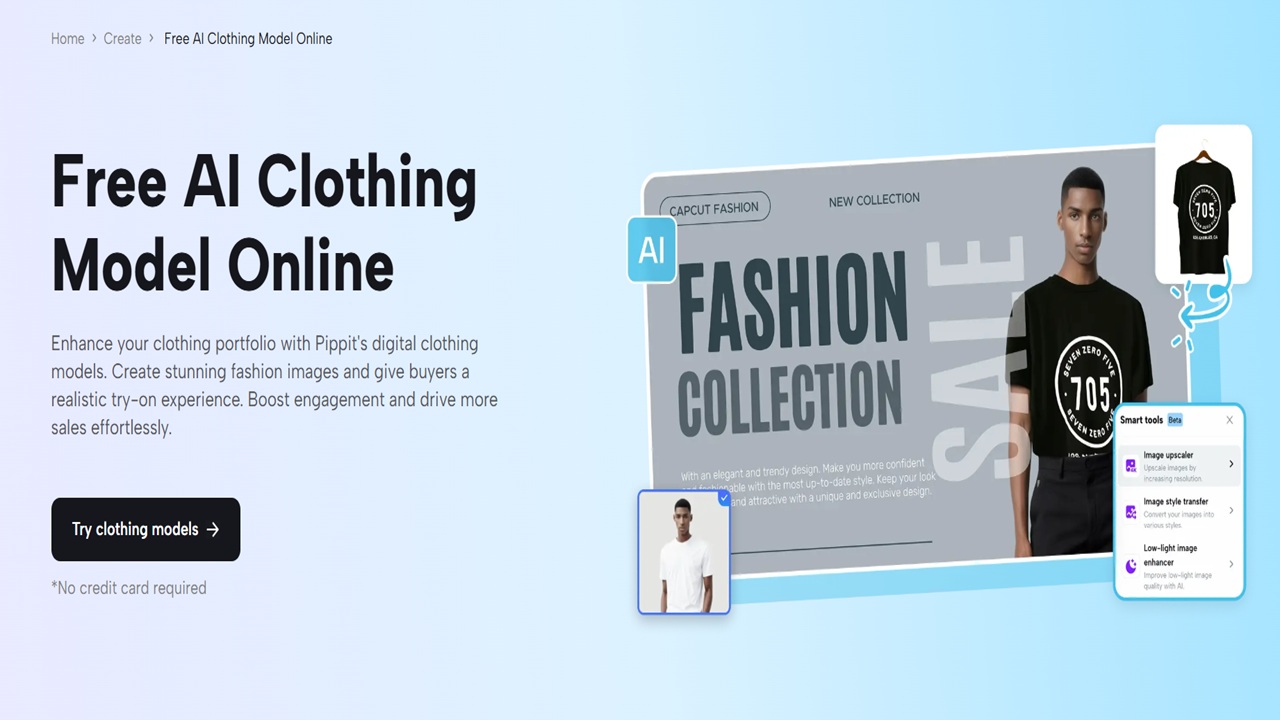The fashion industry depends on constant innovation, together with adaptation. Fashion continues to change because technology develops in parallel with the fashion industry. The fashion industry now experiences another transformative change through the introduction of the concept of an AI clothing model. Pippit is the flagship tool of this transformation because it applies artificial intelligence to modernize how fashion products are presented and distributed to consumers. The article examines Pippit’s AI clothing models, which transform the fashion industry through their impact on design and marketing as well as their contribution to diversity and sustainability.
What Are AI Clothing Models?
AI clothing models represent digital human figures that perform like actual models in real life. The AI-generated models can display different clothing styles through artificial intelligence programming. Brands maintain full creative freedom through model customization options that include body types and skin tones as well as facial expressions and outfit selection. Pippit enables fashion brands and retailers to show their collections through realistic AI-generated models instantly, without requiring traditional photo shoots. The result? The platform generates affordable fashion visuals at scale, which serve e-commerce needs and marketing purposes.
Breaking Time-Related and Cost-Related Barriers.
The fashion industry experienced a significant transformation through Pippit’s AI clothing models by eliminating both time-based and financial barriers. A traditional fashion shoot involves:
- Booking models
- Hiring photographers and stylists
- Renting studios and equipment
- Managing editing and post-production
The entire production timeline extends from days to weeks, while the total expenses reach thousands of dollars. Brands that use Pippit can bypass the entire production process. Users can generate professional-quality fashion imagery by uploading product photos alongside AI model selection from multiple customizable options. The time efficiency enables fashion teams to maintain their market trend responsiveness.
Empowering Small and Independent Brands
Before Pippit, only major fashion houses, along with well-funded brands, could pay for professional model campaigns and photo shoots. Pippit introduced tools that allow independent designers and small businesses to compete worldwide. Emerging brands can produce professional-looking fashion content without large budgets or production teams to match the quality of their competitors. Through its AI technology, Pippit enables businesses to access high-quality visuals that help create equal opportunities in digital marketplaces.
Championing Diversity and Inclusivity
The need for better representation in the fashion industry has reached a critical point. Customers seek fashion models who share their characteristics, including body shape and skin tone, as well as age and gender. The traditional modeling systems struggle with diversity, but Pippit provides an easy solution for scalability. The fashion industry now enables brands to show their products through AI clothing models, which represent various body types and ethnicities. The product representation through Pippit technology enables customers to connect better with the product while enhancing their shopping experience and building brand trust. Through its ability to eliminate physical barriers, Pippit enables the normalization of inclusive content across all visual platforms, including websites, advertisements, social media, and printed catalogs.
Boosting Sustainability in Fashion Marketing
Pippit focuses major efforts on sustainability through its innovative approach. The conventional fashion production process demands significant travel expenses, requires garment shipment, generates waste from sample creation, and depends on energy-intensive delivery systems. AI models reduce the need for most traditional production processes. Virtual modeling helps decrease waste production and environmental emissions, which makes fashion marketing more sustainable. Designers can use Pippit to evaluate virtual garment designs prior to physical prototype development, which minimizes overproduction and reduces unsold inventory. The growing fashion industry’s emphasis on sustainability finds its alternative in Pippit, which provides an environmentally friendly solution to conventional content development methods.
Seamless Integration with Digital Platforms
Through its fashion visual creation process, Pippit generates authentic product images that are optimized for digital distribution. AI-generated model images are ready for use after they are exported in multiple dimensions and formats.
- Online stores and product listings
- Social media content
- Digital ads and email marketing
- Fashion lookbooks and campaigns
The Pippit platform enables users to drag and drop content while automatically formatting it for all digital channels while eliminating the need for manual resizing or editing.
The Future of Fashion Is AI-Driven
Pippit’s AI clothing models represent a transformative approach to fashion content generation and consumption in the market. Through this technology, designers, retailers, and marketers gain speed while creating diverse visuals that decrease environmental impact and provide creative independence. Pippit delivers a strong solution to fashion professionals who need to achieve market dominance through efficient growth.
Conclusion
Fashion continues to advance as Pippit takes the lead position. The fashion industry benefits from AI clothing models through their ability to make fashion more accessible while improving efficiency and inclusivity, as well as promoting sustainability. Pippit provides all users, from fashion startups to global brands and digital creators, with tools to create detailed clothing visualizations without needing physical runways.
